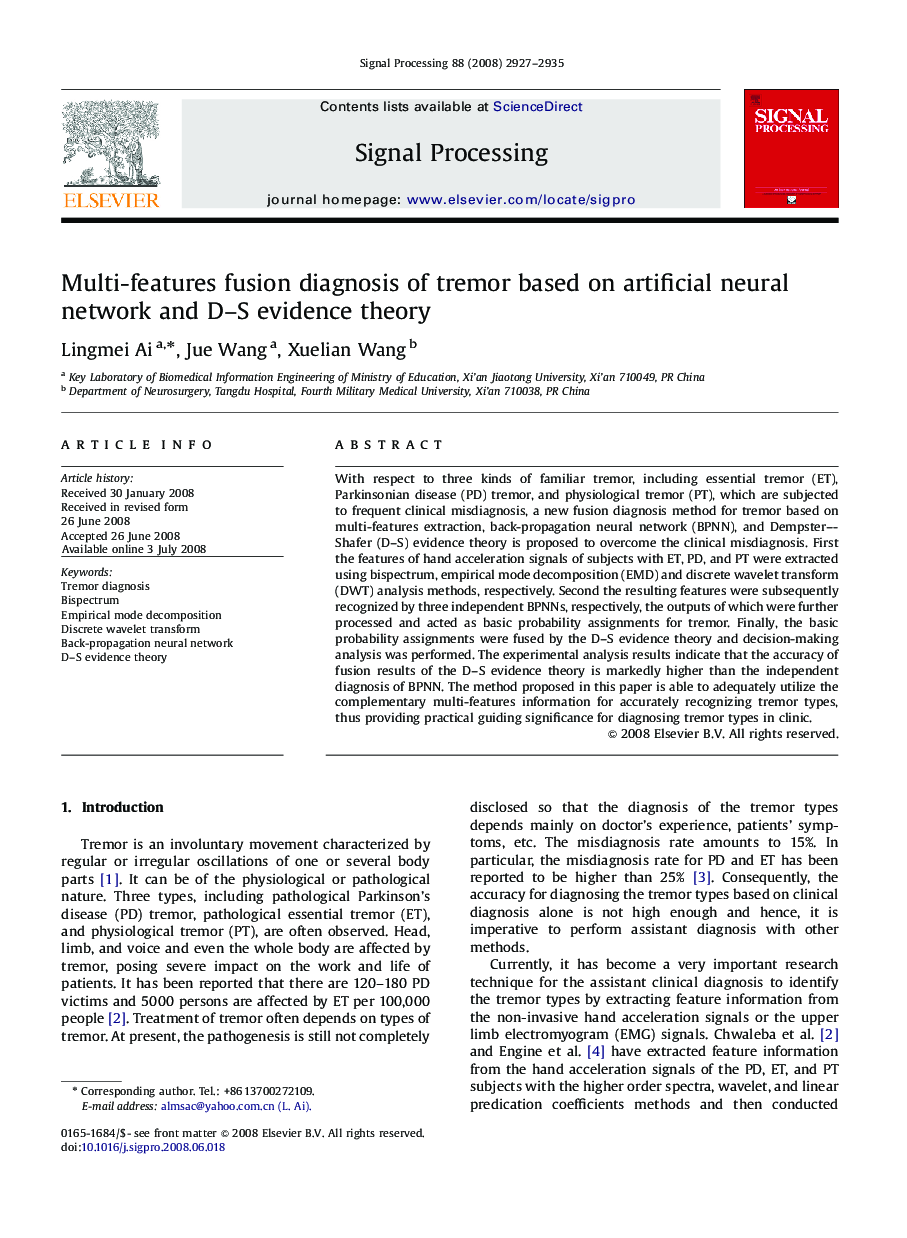| Article ID | Journal | Published Year | Pages | File Type |
|---|---|---|---|---|
| 563952 | Signal Processing | 2008 | 9 Pages |
With respect to three kinds of familiar tremor, including essential tremor (ET), Parkinsonian disease (PD) tremor, and physiological tremor (PT), which are subjected to frequent clinical misdiagnosis, a new fusion diagnosis method for tremor based on multi-features extraction, back-propagation neural network (BPNN), and Dempster–Shafer (D–S) evidence theory is proposed to overcome the clinical misdiagnosis. First the features of hand acceleration signals of subjects with ET, PD, and PT were extracted using bispectrum, empirical mode decomposition (EMD) and discrete wavelet transform (DWT) analysis methods, respectively. Second the resulting features were subsequently recognized by three independent BPNNs, respectively, the outputs of which were further processed and acted as basic probability assignments for tremor. Finally, the basic probability assignments were fused by the D–S evidence theory and decision-making analysis was performed. The experimental analysis results indicate that the accuracy of fusion results of the D–S evidence theory is markedly higher than the independent diagnosis of BPNN. The method proposed in this paper is able to adequately utilize the complementary multi-features information for accurately recognizing tremor types, thus providing practical guiding significance for diagnosing tremor types in clinic.
